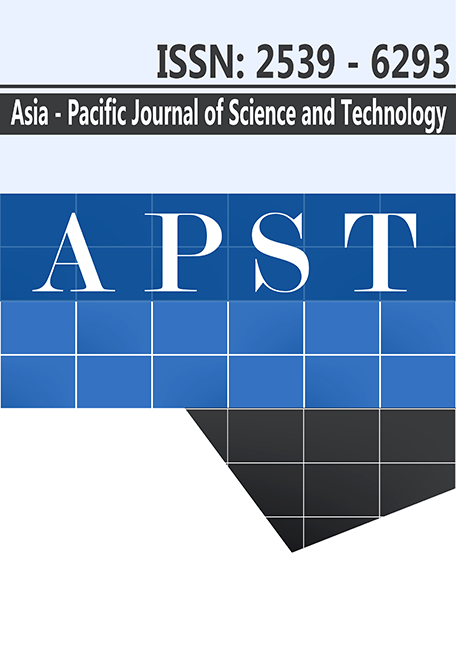Developing students’ writing skills in mathematical problem solving classroom using lesson study and open approach
Main Article Content
Abstract
The purpose of this research was to develop students’ writing skills in mathematical problem solving classroom using Lesson Study and Open Approach. Target groups were 1st grade students in fourteen mathematics classrooms using Open Approach as a teaching approach. Data were collected by using questionnaire of students’ learning skills. The research findings found that students’ writing skills in mathematics classroom using open approach were as follows; 1) students took note follow the rule of writing in notebook. 50%), 2) students wrote a well organize of their ideas in notebook. (21.43%), 3) students presented their ideas using picture or table and found their fault in presentation or explained their ideas and others’ ideas. (85.71%), 4) students wrote a summarize of the procedure, reasonable and easy to understand and found advantage and different from their friends’ presentation. (57.14%), 5) students explained their reasons consistent with expectations and could be summarized their ideas based on the problems (35.71%).
Article Details
References
[2] Isoda, M., Morita, M., Nobuchi, M., 2009. Problem Solving Approach: Standards for Teachers and Children,
cited in M. Inprasitha, 2014. “Processes of Problem Solving in School Mathematics”.
[3] Cho, K., Schunn, C., 2010. Developing writing skills through students giving instructional explanations. In
Instructional Explanations in the Disciplines (207-221). Springer US.
[4] Kieft, M., Rijlaarsdam, G., Van Den Berg, H., 2006.Writing as a Learning Tool: Testing the Role of Students'
Writing Strategies. European Journal of Psychology of Education 21, 17-34.
[5] Bicer, A., Capraro, R.M., Capraro, M.M., 2013. Integrating writing into mathematics classrooms to increase
students'problem solving skills. International Online Journal of Educational Sciences 5, 361-369.
[6] Siripattarachai, P., 2013. STEM Education and 21st Century skill Development. In Executive Journal 33, 49-56.
[7] Inprasitha, M., 2004.Teaching by open-approach method in Japanese mathematics classroom. KKU Journal
of Mathematics Education 1, 1-15.
[8] National Council of Teachers of Mathematics (NCTM). Principles and Standards for School Mathematics.
Reston, Va: NCTM, 2000.
[9] Inprasitha, M., 2010. One Feature of Adaptive Lesson Study in Thailand: Designing Learning Unit. In C. S.
Cho, S. G. Lee, & Y. H. Choe (Eds.). Proceedings of the 45th National Meeting of Mathematics Education,
Korea: Dongkook University, Gyeongju, 193-206.
[10] Cheah, U.H., 2008. Introducing mathematical modelling to secondary school teachers: A case study. The
Mathematics Educator 11, 21-32.
[11] Inprasitha, M., 2015. Lesson Study: Challenges in Mathematics Education. New Jersey: World Scientific
Publishing Company.


